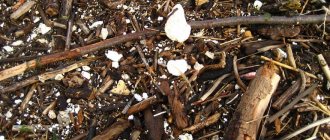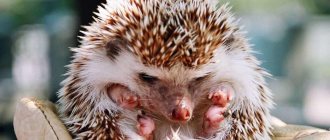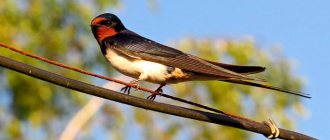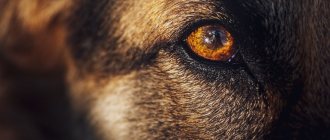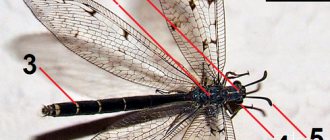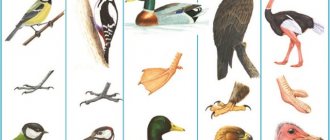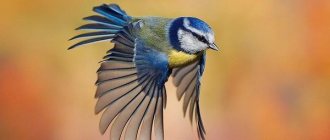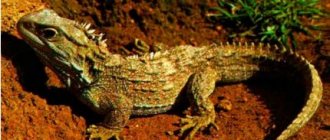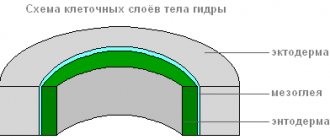Many summer residents dream of turning a free space on a country plot into a small artificial private pond, on the banks of which it will be very comfortable for all household members to relax on hot summer evenings. Why not? This is not a bad idea!
We have already taught you how to set up your own pond at your summer cottage. Now we advise you to learn in advance “by sight” all the possible “neighbors” that you will acquire along with any couple of square meters of water surface. And they won’t keep you waiting!
So, in the words of Little Raccoon: “Who lives in the pond?”
Frogs and toads
In our latitudes near bodies of water you can find lake, pond and sharp-faced frogs, spadefoot, toad, tree frog, and several species of toads. They all differ in size, color and body shape, so you can easily distinguish them if you wish.
They prefer small water bodies to live in, with a muddy bottom, well heated and preferably covered with duckweed and other aquatic vegetation.
Actually, in their adult state, these tailless amphibians do not always constantly need water - even their name speaks of this. They hide in swamps, meadows and fields among tall herbaceous plants (some can even climb trees), actively catch insects, slugs and worms (an animal useful for the garden!), throwing out a long sticky tongue - the activity of most species occurs in the evening and night time.
But frogs lay eggs (spawn) exclusively in water, so during the breeding season they concentrate near bodies of water. If you are “lucky” and amphibians take a fancy to your home pond, real concerts await you on spring evenings. Males gather in a “choir” and try to attract females with loud roulades. Croaking is the sound they make thanks to a well-developed internal throat resonator that inflates like a balloon.
Frog eggs are usually packaged in a protective jelly-like mass that swells in water. A few days after laying and fertilization, the eggs hatch into tadpole larvae that lead a completely aquatic lifestyle. Tadpoles feed on aquatic vegetation and all sorts of small things - protozoa, rotifers, organic remains of animal and plant origin at the bottom of reservoirs.
Visually, at first it is a small gray or black “fish”, which over time grows in size, grows legs (back and then front), loses its tail and magically turns into a fingerling frog by mid-summer. During the process of this metamorphosis, not only external, but also serious internal rearrangements of all systems rapidly occur - for example, gill sacs disappear and are replaced by lungs - therefore, what is happening is very interesting and instructive, for example, for children.
Different frogs and toads also overwinter in different ways - some burrow into the ground, others at the bottom of reservoirs, others look for shelter such as basements or rodent burrows.
By the way, be careful - if there really are a lot of frogs in your pond, other “neighbors” may follow them. The fact is that these amphibians are the favorite food of snakes and vipers.
- What types of snakes live in our forests and what to do if you are bitten by a snake
Do you like to walk in the forest in the warm season? Are you ready to meet a snake?
10) Anaconda
Anacondas are among the largest snakes on the planet and are found in rivers and humid areas of South America. The name "anaconda" is believed to be derived from the Tamil word "anaikolra"
, which means "elephant killer", referring to the reptile's fearsome reputation.
Anacondas feed on fish, birds, reptiles and small mammals and are often kept as pets. These large snakes can be dangerous to humans, but there are only a few known cases of attacks.
Like other boas, anacondas are non-venomous and kill their prey by squeezing it tightly in their arms. Like other snakes, anacondas swallow their prey whole.
Cancers
Crayfish also prefer warm, well-warmed in summer, nutrient-rich reservoirs with a high oxygen content in the water and a peaty or clay bottom. They feed on the remains of organic matter and fresh aquatic plants, and live in secluded places under snags and stones or in self-dug burrows on coastal slopes. In winter, crayfish move from the shallows deeper into the reservoir, where they feed on algae or fallen leaves.
Crayfish are also active mainly in the dark; during the day they prefer to sit out in their shelter, which they zealously guard. They even look for food, trying not to move away from “home”.
The broad-clawed crayfish is very sensitive to the purity of water, it is even called a “natural indicator,” but the narrow-clawed crayfish can also settle in a polluted body of water.
It is interesting to watch this arthropod - on land it moves as usual, but it swims backwards - raking with its tail plate. In case of danger, the crayfish stirs up the mud using its tail fin or swims away with a sharp movement.
The female crayfish “keeps the eggs to herself” - she carries them on her abdomen. Newborn crustaceans, several millimeters in size, spend the first couple of weeks attached to the female’s abdomen, and only then detach and begin an independent existence. In their first summer, young crustaceans molt five times, their length doubles, and their weight increases six times! In the future, the number and timing of molting strongly depend on temperature and nutrition. Crayfish live for about 20 years.
11) Giant freshwater stingray
Freshwater stingrays live in the rivers of Southeast Asia and northern Australia, where they can reach gigantic sizes - up to 5 meters in length. The weight of some representatives can be 600 kilograms. Very little is known about these creatures, including how many of them remain on the planet and whether they can survive in salt water.
These stingrays are very difficult to see because they like to burrow into river mud. They hunt mollusks and crabs, striking prey with their electric discharges. There are cases where stingrays have overturned boats, but they rarely attack people.
The stingray delivers a powerful blow with its tail, on which there is a spike that contains deadly poison and a sting up to 38 centimeters long.
Many scientists are concerned that freshwater stingrays are in danger of extinction due to river pollution and loss of natural habitat.
Dragonflies
Near any body of water you can always spot colorful and graceful dragonflies. Why do they need water? They live in it throughout their larval stage.
As adults, these are relatively large insects, with a movable head, large eyes, short bristle-like antennae, an elongated slender abdomen and four transparent wings with a dense network of veins. Dragonflies are active, specialized predators that feed on insects caught in flight above the surface of the water or in the grass.
Females lay fertilized eggs directly on the water, on algae, coastal silt, and moss. At the same time, insects, surrounded by an air bubble (thanks to which they remain dry), can submerge in water, in some groups - deeper than a meter!
The eggs, after a while, hatch into tiny larvae, which, while growing up, undergo several molts, accompanied by serious changes in appearance and internal systems. Most dragonfly larvae live on the bottom or on underwater plants, some burrow into the ground. The larvae of some dragonflies are able to tolerate drying out and freezing of a reservoir, continuing their development after it is refilled with water.
The grown larvae, like their parents, are serious predators with very powerful jaws. Some of them actively move, others do not like to swim and usually wait for prey themselves - mainly the larvae of other aquatic insects, tadpoles, leeches, and fish fry.
By the time the larvae transform into adult dragonflies, the larvae begin to breathe atmospheric air. To do this, they use any support (stems of aquatic plants, snags, stones) to half-climb out of the water and then remain in this position from several hours to several days - “acclimatize.” For the final transformation, the larvae are completely removed from the water, rest for a while and then begin to gradually free themselves from the skin. The larval shell ruptures and an adult dragonfly emerges. It takes from several hours to a day to acquire normal color and the final formation of integument in different species and under different environmental conditions.
1) Piranha
Known for their razor-sharp teeth and amazing gluttony, piranhas live in several of South America's largest river basins. This omnivorous fish prefers meat, and although attacks on humans are extremely rarely documented today, the earliest travelers fell prey in large numbers to these insatiable predators.
During his historic trip to Brazil, Theodore Roosevelt was able to see how a school of piranhas devoured an entire cow before his eyes, leaving only a skeleton of it in literally a matter of seconds. His story fueled the imagination of locals for many years, although in reality the event was staged as a performance by fishermen who caught a school of piranhas and starved them severely beforehand.
Piranhas are important “cleaners” of the rivers in which they live, and if food becomes scarce, they may well devour each other. Fishermen often suffer from piranhas, which leave them with scars. It is not yet known exactly how many species of piranha there are, but it is approximately 30 to 60.
Leeches
Few people like these inhabitants of freshwater bodies - these parasites feed on the blood of mainly warm-blooded animals or mollusks. However, people have also found use for this property - some varieties of these annelids are used in medicine, in hirudotherapy (bloodletting) due to the presence of special biologically active substances in saliva. Moreover, the healing properties of leeches have been known for a long time, and in the 19th century they were even traded profitably in Russia - leeches were bred in special ponds and supplied to foreigners.
A typical habitat for leeches is a lake or pond with clean water, a muddy bottom, thickets of reeds along the banks and an abundance of frogs at least some time of the year. Leeches need frogs at an early stage of development - in the first days of feeding, they are not able to feed on larger animals.
The leech looks like a small “worm” with a flat abdomen and suckers on the front and rear ends of the body. In water it swims, making wave-like movements, on land it moves with the help of suction cups and crawling, like other worms.
Hungry leeches await their prey, attaching themselves to plants or other substrate with both suckers. When signs of approaching prey appear, they disengage and swim in a straight line towards the source of vibrations. Having found an object, the leech fixates on it with the rear suction cup, then attaches itself to the front one and bites the victim with jaws located deep in the suction cup and begins to drink blood. She does this very quickly and during the feeding process she can increase 7-9 times! These worms developed this feature due to their very sparse diet—the leech can wait months for a victim.
In summer, leeches lay cocoons in which embryos mature. After some time, young animals emerge from them - miniature copies of adult individuals, already ready to feed on blood.
Other animals
Of course, this is not the entire list of animals that are found in the pond. There may also be hydras attached to aquatic plants or directly to the ground. They are single, sedentary polyps. They breathe and excrete metabolic products over the entire surface of the body, feed on small invertebrates, which they capture with their tentacles and bring to their mouths. Their amazing feature is their high regenerative ability, due to which they are considered biologically immortal.
There are also a lot of oligochaetes, annelids or earthworms in the pond, as well as planaria, flat and other varieties of leeches. A snake can swim in the water - a non-venomous snake, but capable of painfully biting in self-defense. However, if you don’t touch her, aggression from the outside no longer appears. Some spiders have also adapted to life in the pond, for example, the silver spider, which weaves its web under water and feeds on small prey entangled in it.
Thus, even in an artificial reservoir a huge number of organisms live. Some of them are large, others cannot be seen with the naked eye, but they are all a single living component of the ecosystem, affecting the chemical composition, physical indicators and other parameters of water.
Mosquitoes
Alas, the number of these unpleasant insects has a chance to increase sharply in your suburban area when a pond is built there. The fact is that the mobile larvae and pupae of mosquitoes live in stagnant bodies of water.
Every few days, a female mosquito lays dozens of eggs directly on the surface of the water or on the wet soil on the shore. It is for their reproduction that mosquitoes require blood, so the egg laying cycle is directly dependent on blood consumption.
The egg develops into an adult mosquito within a week, going through the larval and pupal stages. Mosquito larvae and pupae living in water breathe atmospheric air through breathing tubes, exposing them to the surface, and feed on aquatic microorganisms.
You probably know how adult mosquitoes feed; males prefer plant juices, and females “hunt” warm-blooded mammals, including humans.
- 5 reasons why mosquitoes “love” you so much and what to do if the feelings are not mutual
Why do mosquitoes bite some people and not others? Everything is very simple.
6) Snakehead fish
Snakeheads are often feared by people in the West, where some of these invasive fish have been introduced as invasive species. After a fisherman discovered a snakehead of the species Channa argus
in North America, in one of the ponds in Maryland, the news of the discovery became a real sensation. Biologists warn that this large freshwater predatory fish is already well established in the waters of North America, where it is causing serious damage to local ecosystems.
Voracious predators at the top of the food chain, snakeheads reach a length of about a meter. They hunt invertebrates, frogs and small fish, and during reproduction they can attack anything that moves.
Snakeheads can breathe air and can survive without water for up to 4 days! They survive long periods of drought by burying themselves in the mud. Several species of these fish are native to Asia, where they are often caught and eaten by people. Snakeheads are often kept in home aquariums, although owners of these fish are warned that they have an aggressive disposition.
Water striders
It is difficult to confuse this predatory bug with someone else in a pond - graceful, long-legged, dark brown insects 10-15 mm long glide straight across the water surface without breaking surface tension.
They live right there, on the surface of the water. Their body and tips of their legs are covered with hard hairs that are not wetted by water, due to which water striders are adapted to glide through water. They feed on small invertebrates that have fallen to the surface of the water.
Water striders lay their eggs on the leaves of aquatic plants, placing them in one row, in a “cord”. Laying takes place throughout the summer.
With the onset of cold weather, water striders leave water bodies and find refuge under the bark of old stumps, in barns or simply in moss. They can also fly away for the winter.
Swimmers
If you notice a large “thick” dark beetle several centimeters long in a pond, most likely it is one of the diving beetles (there are about 300 species of them in Russia).
Swimmers are predators. They attack other aquatic insects, tadpoles, newts and juveniles that are smaller than them. To breathe underwater, beetles “capture” a supply of air under their elytra.
The female diving beetle lays eggs in the tissue of aquatic plants. The eggs hatch into larvae, which are the same predators as adult insects. Their mandibles are pierced with thin tubules through which digestive juice flows into the victim’s body, and digested food flows back. The larvae also live in water and take air into the trachea through a tube at the end of the body. They come out onto land to pupate.
3) Goliath tarantula spider
The second largest spider in the world, the goliath tarantula (lat. Theraphosa blondi
), is a relative of the tarantula. It got its name after Victorian explorers first witnessed a spider catching and eating a hummingbird.
These large spiders live in the swampy rainforests of northern South America. They can reach a length of up to 30 centimeters including paws and weigh about 170 grams. Like many other spider species, females can devour males after mating, which is partly why males have a lifespan of 3 to 6 years and females 15 to 25 years.
Despite the terrifying name, birds are not the main dish in the spider's diet. They mostly eat insects and other invertebrates, although they occasionally eat small vertebrates. These giant spiders usually pose no particular threat to humans, but if the spider gets too angry, it can bite, leaving a sting no more serious than a bee sting.
Twirly
Another dark shiny bug, although much smaller in size, only about 8 mm in length - this is a spinner.
The body shape of adult beetles is teardrop-shaped or spindle-shaped. Interestingly, these insects have two pairs of eyes, widely spaced - the upper one on the forehead for aerial vision and the lower one “on the neck” for underwater vision.
Adult beetles swim along the surface of reservoirs with fast zigzag movements and usually stay in groups. The larvae live in the water column. Both the larva and the adult beetle are predators.
5) Nile crocodile
This representative of the predatory world belongs to the genus of true crocodiles and lives on almost the entire African continent. The crocodile has gained a reputation as one of the most bloodthirsty and dangerous animals on the planet.
Males of the Nile crocodile reach a length of 3.5 to 5 meters, but longer representatives have been discovered. Typically, solitary crocodiles attack prey that is about the same size as themselves or smaller. Occasionally they may hunt in groups. Then they choose larger animals, such as hippos or rhinoceroses. The Nile crocodile can attack humans. From the teeth of this predator, approximately several hundred to several thousand people per year die!
The ancient Egyptians feared and revered the Nile crocodile, and it became part of their mystical cults. Nowadays, crocodiles are mercilessly exterminated. By hunting for their valuable skin, although conservationists have been able to ensure that the population of these animals in Africa has increased. Today there are from 250 to 500 thousand individuals.
Water scorpions
Despite the terrifying name, this insect is not a scorpion at all, but a bug. It was given its name because its body shape is similar to that of a desert predator.
This is a large insect up to 1.5-4.5 cm long with a dim protective color. Water scorpions are predators. They have specialized sensory organs on their grasping limbs that help them hunt. Another unusual organ of static sensitivity is located on the abdomen; with their help, water scorpions orient their body under water.
Having limited swimming abilities, these insects spend a long time in ambush on aquatic plants, often near the surface of the water with their breathing tube exposed.
 Giant catfish
Giant catfish
These large catfish live in many rivers around the world and are important scavengers of freshwater ecosystems.
The largest representative is the giant catfish from the Mekong River, which reaches a size of up to 3.2 meters in length and a weight of 300 kilograms. Once found in several countries in Southeast Asia, the catfish is now seriously endangered due to the destruction of its natural habitat. Very little is known about this freshwater fish; efforts are being made to preserve the endangered species.
The giant catfish is not particularly dangerous to humans. Some representatives of giant catfish can live more than 60 years.

